Design notes from Sport England’s Swimming Pool Support Fund on how to create energy savings with your swimming pool.
Pool covers
Providing a pool cover to use at night when the pool is not in use can save energy in the following ways:
- It reduces the evaporation of pool water – hence the ‘make up water’ to replace the evaporation is not required. This reduces water demand and energy associated with heating the fresh water make up.
- Pool hall air handlings can be run on a reduced volume of air, due to the reduction in evaporation – thus saving fan energy and energy associated with heating the fresh air.
- Pool air temperature can be reduced, as less evaporation – thus saving energy on heat losses in the pool hall.
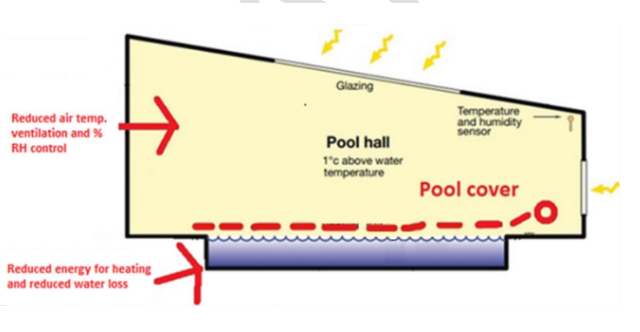
Based on a pool 25 m x 12.5 m, the annual cost savings could be around £11,500 for a capital outlay of around £30,000-£50,000.
Photovoltaic (PV) panels
Installing PV panels generates electricity, which the building can use rather than paying for electricity supplied by the grid.
The PV panels are generally installed on roofs, and then connected to the electrical system within the building and left to generate free electricity. They should ideally be installed on a south facing roof, and they generate the most during the summer when days are longer and sunlight has more energy.
For every 1,000 m2 of roof space available, there is the likelihood to install around 600 m2 of PV, which would make a saving of around £27,000 per annum, with an approximate cost of £180,000.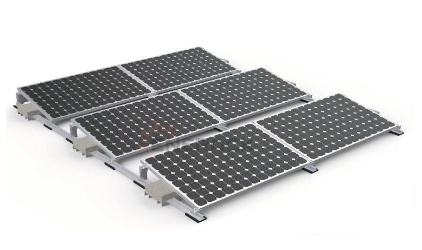
Where generated electricity can’t be used, it will be exported back to the grid free of charge, thus savings on this will be lost. It’s therefore important not to install too much PV; ideally, the electricity generated should not be greater than the demand, or the payback of the PV will be reduced.
Water-cooled variable refrigerant flow (VRF)
Standard VRF takes heat from areas that are cooled (such as the gym) and discharges this heat to the atmosphere, effectively throwing the waste heat away.
Water cooled VRF uses different technology and rather than discharging the heat to atmosphere, the heat is passed into a water circuit and transferred to the pool water.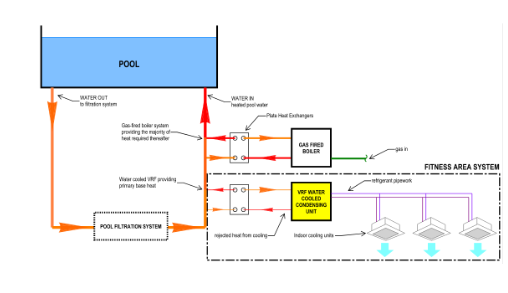
The technology could be used in existing buildings, though it’s not especially practical unless the existing air conditioning system has come to the end of its life.
For a typical 25 m x 12.5 m pool with around 600m2 of fitness space, the extra over cost for water-cooled over air-cooled would be around £40,000, with an annual running cost saving of approximately £5,000 per year.
Combined heat and power (CHP)
CHP plants are like car and truck engines, which generally run on natural gas. They generate and use both electricity and heat, which are both used in the building. The nature of CHP plants means they don’t do either very efficiently, but the sum of both generates a running cost saving. They typically generate electricity at around 40% efficiency and heat at around 50%, but the combined value of both does generate savings.
It's important that the CHP plant is not oversized – smaller is better – as units perform best when running at 100% constantly.
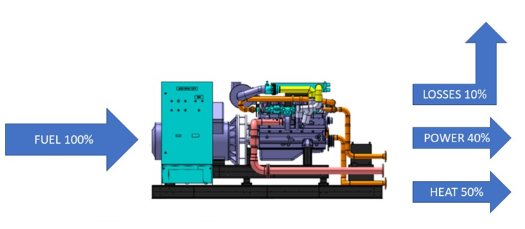
For a typical 25 m x 12.5 m pool, the cost of a CHP plant would be in the order of £350,000, with estimated savings of around £50,000 per annum.
Pool hall ventilation
There is a significant difference in guidance given for pool hall ventilation rates from various sources. There are at least four credible sources that could be used to determine the correct ventilation rate for the pool hall.
The Sport England guidance alone ranges from 4 air changes per hour to 10 air changes per hour, and based on a typical 25 m x 12.5 m pool, the difference in cost for running these systems could range from £267,000-£310,000 (if the air handling units include heat recovery).
This represents a considerable difference in cost, so ensuring the correct rate for the application is essential.
A pool that is used for competitions and general swimming would be likely to require the lower air change rate, while a pool used for leisure, including water features, etc., would be much more likely to require the higher rate.
It is important that ventilation rates are high enough to ensure the building is protected from corrosion and breakdown of the building fabric, which can occur with low ventilation rates. However, as illustrated above, significant savings can be made by reducing the ventilation rate, where it is technically feasible to do so. 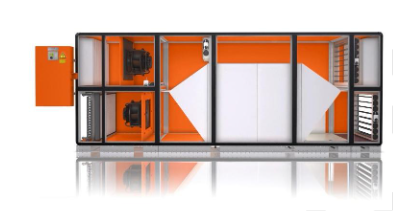
It is recommended that before any change is made, expert advice is sought to determine the operating ventilation rate and the potential reduced rate to realise cost savings.
